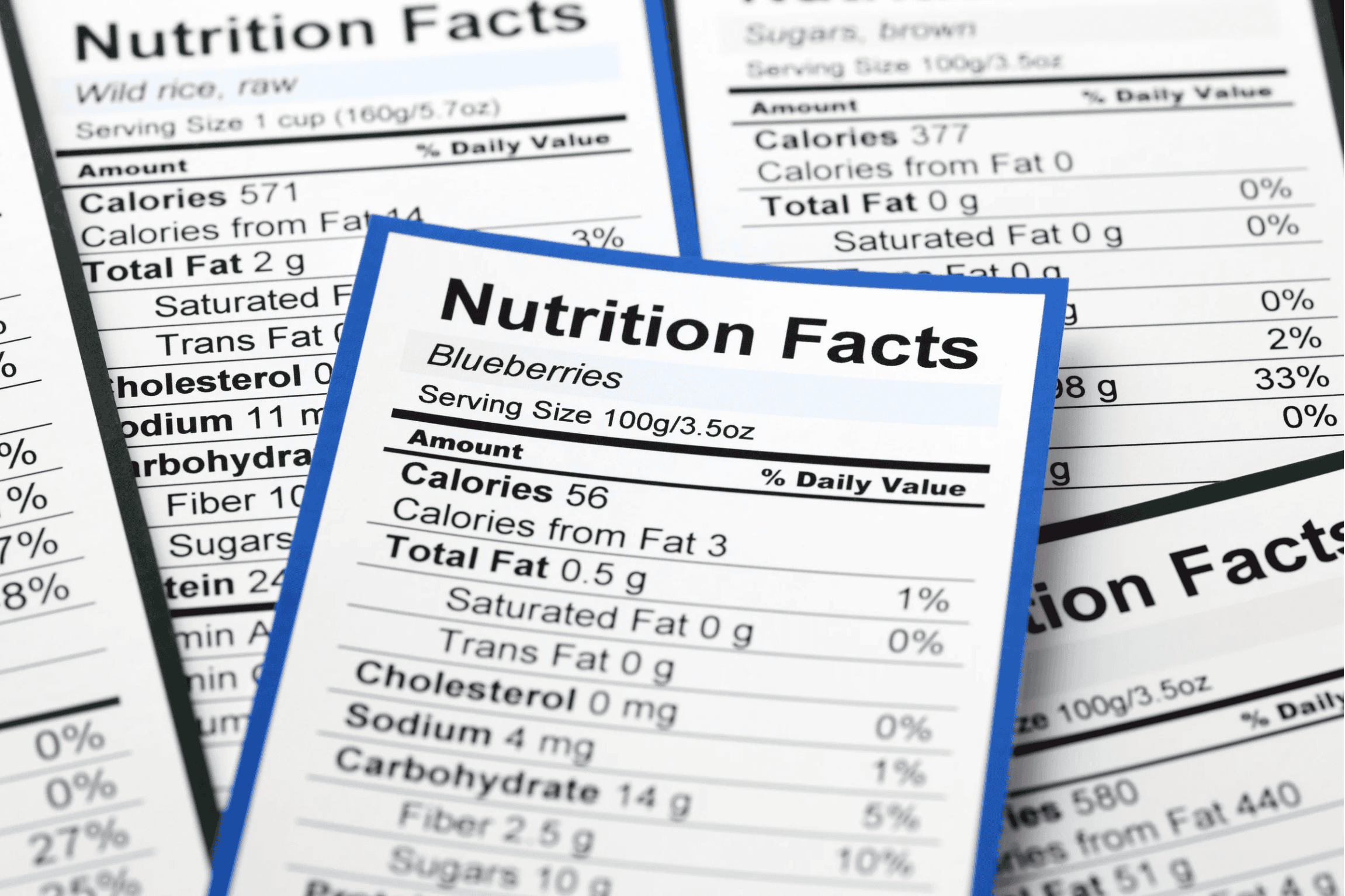Reading ingredient labels helps people make smarter food choices. Knowing what to avoid—like added sugars or unhealthy fats—and what to look for, such as whole grains or simple, familiar ingredients, makes a real difference.
Paying attention to the order of ingredients can reveal if a product is as healthy as it claims. Sometimes, allergens or additives hide in long lists with hard-to-pronounce names, so checking labels matters a lot.
If you want more guidance, visit the American Heart Association’s guide.
Key Takeaways
- Learning ingredient labels helps make informed food choices.
- Watch for hidden additives, allergens, and unhealthy ingredients.
- Choose foods with simple, easy-to-understand ingredient lists.
Understanding Ingredient Labels
Ingredient labels on packaged foods let you know what’s really inside. They help you spot unwanted additives and make choices that fit your nutrition goals.
How to Locate and Read the Ingredient List
You’ll usually find the ingredient list on the back or side of packaged foods, just below the nutrition facts. The list shows every ingredient used to make the product.
Manufacturers must use clear names, and common allergens like milk, wheat, or peanuts often get highlighted or listed separately. If you see words you don’t recognize or can’t pronounce, those might be additives or preservatives.
Look for ingredients like “sugar” or “flour” by their common names. If you have allergies, always check the “Contains” statement or scan the list for the allergen’s name. For more tips, see the FDA’s guide.
Order of Ingredients and What It Means
Ingredients appear in order by weight, from most to least. The first ingredient makes up the largest part of the food.
If you see sugar or sweeteners near the top, the food probably has a lot of sugar. Items listed further down are present in smaller amounts.
If you want to eat less salt, avoid foods where salt is listed high up. This order also helps you spot foods with too much saturated fat, added sugars, or anything else you want to limit.
Key Terminology: Natural, Artificial, and Processed
Labels throw around words like “natural,” “artificial,” or “processed” all the time. Natural ingredients come from plants or animals with little change. Artificial ones, like some flavors and colors, are made in labs.
Processed ingredients get altered to last longer or taste different. The word “natural” isn’t always strictly defined, so don’t assume it means healthy.
Artificial colors and flavors should show up clearly on the label. Processed foods might hide sugars, sodium, or preservatives, so read closely to steer clear of stuff you don’t want. More on ingredient terms at Understanding Ingredients on Food Labels.
What to Look For in Ingredient Labels
Checking labels can help you pick foods with more nutrients, healthier fats, and simple, whole ingredients. Focusing on a few key points makes healthy shopping less overwhelming.
Whole Foods and Simple Ingredients
Pick products with short ingredient lists you can actually recognize. Foods made with whole grains, veggies, fruits, or legumes are usually better for healthy eating.
Look for phrases like “whole wheat,” “brown rice,” or “rolled oats.” Ingredients like beans, nuts, and seeds mean the food’s closer to its natural state.
Skip products with long lists of chemicals, preservatives, or artificial colors. Foods with mostly whole food ingredients tend to have more vitamins, minerals, and fiber.
A simple list usually means less processing. Reading the ingredient order helps too, since the first few ingredients make up most of what you’re eating.
Identifying Essential Nutrients

Check if the food is a good source of key nutrients like protein, fiber, iron, calcium, vitamin D, and potassium. These nutrients help with muscle growth, bone health, and normal blood pressure.
Essential nutrients to look for:
- Calcium (for strong bones and teeth)
- Iron (helps the body use oxygen)
- Potassium (good for heart health)
- Vitamin D (supports bones and immune system)
- Protein (builds and repairs muscle)
- Fiber (helps with digestion)
The nutrition facts label gives info on these nutrients. Foods high in fiber, protein, and key vitamins or minerals help you build a balanced diet.
Try to choose foods with a few grams of fiber and protein per serving so you’ll feel satisfied longer.
Recognizing Healthier Fats and Oils
Look for foods made with oils like olive, canola, or sunflower. These have more unsaturated fats, which are better for your heart.
Avoid foods with “partially hydrogenated oils” or “trans fats.” Trans fats can raise cholesterol and put your heart at risk. Watch out for foods high in saturated fats too, which are found in butter, palm oil, or coconut oil.
If healthy oils or fats show up early in the list, that’s a good sign. Labels that say “low saturated fat” can also help you spot better options. Learn more about fats and oils on labels.
Spotting High-Fiber and Nutrient-Rich Ingredients
Pick products where whole grains, beans, lentils, seeds, nuts, or veggies show up early in the list. These are high-fiber, nutrient-packed foods that keep digestion healthy and energy steady.
Fiber matters because it can lower heart disease risk and help with blood sugar. Look for foods that say “good source of fiber” or have at least 3 grams per serving.
Nutrient-rich ingredients add vitamins and minerals without piling on sugar or salt. Eating foods naturally high in fiber helps you get more out of every bite.
Whenever you can, go for whole foods and ingredients that boost fiber, protein, vitamins, and minerals for a better-balanced diet.
What to Avoid on Ingredient Labels

Lots of common foods have ingredients that can raise your risk for weight gain, heart disease, or high blood pressure. Watching out for certain additives, fats, sugars, sodium, and processed stuff helps you make better choices.
Artificial Additives and Preservatives
Food companies add artificial colors, flavors, and preservatives to improve taste, looks, and shelf life. Some of these chemicals—like red dye No. 3 and titanium dioxide—have raised health concerns, including possible cancer risk and allergies.
Other preservatives such as brominated vegetable oil, propylparaben, and potassium bromate show up in sodas, baked goods, or processed snacks. These have gotten more scrutiny lately, and it’s smart to avoid them when possible.
To steer clear, read ingredient lists and stick with simple, easy-to-spot ingredients. Foods with long lists or lots of chemical names usually have a few questionable additives. For more info, see this list of ingredients to avoid on food nutrition labels.
Hidden Sources of Sugar and Added Sugars
Added sugars hide under names like cane sugar, corn syrup, dextrose, fructose, and maltose. These sweeteners can lead to weight gain and are linked to type 2 diabetes and heart issues.
Manufacturers sometimes use several types of sugar in one product, making it tricky to spot how much is really there. Foods labeled ‘light’, ‘lite’, or ‘reduced sugar’ might still be packed with sugar or sugar substitutes.
When you read labels, check both “Sugars” and “Added Sugars.” Try to avoid products where added sugars are among the first few ingredients—that means there’s a lot. Learn more about how to read food labels to catch hidden sugars.
Unhealthy Fats: Trans Fats and Excess Saturated Fat
Trans fats and lots of saturated fats aren’t good for you. They raise cholesterol and increase heart risk. Even if a label says “0g trans fat,” it might still have trans fats listed as “partially hydrogenated oils.”
Saturated fats show up in processed foods, baked goods, and fatty meats. Eating too much can lead to weight gain and may play a role in colorectal cancer or heart disease.
For healthier eating, pick foods labeled low in saturated fat and skip anything with trans fats. Watch out for claims like ‘reduced fat’ or ‘extra lean’—sometimes these foods still have unhealthy fats or extra sugar to make up for taste.
High Sodium, Excess Calories, and Processed Ingredients
Many packaged foods pack in a lot of sodium and calories. High sodium can push up your blood pressure and raise your risk for heart disease.
Canned soups, frozen meals, and salty snacks are some of the usual suspects. Check for ingredients like sodium nitrate, monosodium glutamate (MSG), and other salt-based compounds.
Even foods labeled as “less sodium” or “low-sodium” might surprise you with more sodium per serving than you’d think. It’s honestly a bit frustrating how sneaky some labels can be.
Calories can pile up fast when you eat processed foods or larger portions. Always check calories per serving, and don’t forget to look at calories from fat.
It’s easy to eat way more calories than planned, especially if you don’t notice how many servings are in a package. Choosing products with fewer ingredients, or those closer to their natural state, can help you avoid processed stuff, unhealthy fats, sugars, and extra sodium.
If you’re curious about what to watch for, check out these nutrition label red flags so you can spot harmful additives and unbalanced nutrients.
Managing Allergens and Special Dietary Needs

Allergen management matters a lot for people who need to avoid certain foods. Ingredient labels help you spot allergens, cross-contamination, or even sneaky sources of gluten.
Understanding Major Food Allergens and Allergen Codes
The Food Allergen Labeling and Consumer Protection Act (FALCPA) says packaged foods have to name the eight most common allergens: milk, eggs, fish, crustacean shellfish, tree nuts, peanuts, wheat, and soy. Sesame joined the list in 2021, so now it’s a major allergen too.
You’ll find these allergens clearly listed in the ingredients or in a “contains” statement right after the list. When you read an ingredient label, look for the following major allergens:
| Allergen | Common Forms |
|---|---|
| Milk | Casein, whey, lactose |
| Eggs | Albumin, egg whites |
| Peanuts | Peanut oil, groundnuts |
| Tree nuts | Almonds, walnuts, pecans |
| Soy | Soy lecithin, tofu |
| Wheat | Semolina, spelt, farina |
| Fish | Cod, salmon |
| Crustacean shellfish | Crab, lobster, shrimp |
| Sesame | Tahini, sesame oil, sesame seeds |
Some foods use allergen codes or scientific names. For example, “casein” means milk, and “albumin” means egg.
It’s worth learning these terms to avoid accidental exposure. If you want more help, FoodAllergy.org has a useful guide on how to read a food label.
Reading Advisory Statements and Identifying Cross-Contamination
Many packages carry advisory statements like “may contain peanuts” or “processed in a facility that also processes wheat.” These warnings mean a product could have traces of allergens, even if they’re not listed as ingredients.
There’s no law that says companies have to use these statements, so the language jumps around a lot. Some labels say “peanut-free” or “egg-free,” but it’s still smart to read the full ingredient list and check for any advisory notes.
Even tiny amounts of allergens can trigger reactions for some people. Reading these warnings helps you lower the risk of accidental contact with allergens. For more details about warning labels, check out the FDA’s info on food allergies.
Recognizing Gluten and Celiac Disease Considerations
People with celiac disease or gluten sensitivity need to avoid gluten. Gluten hides in wheat, barley, rye, and sometimes even oats if there’s cross-contamination.
It can sneak into additives like malt flavoring or modified food starch. Sometimes, you’ll find it lurking in sauces too.
Look for products labeled “gluten-free.” The FDA says these foods must contain less than 20 parts per million gluten.
Always check the label for wheat, barley, and rye. Hidden sources of gluten can pop up when you least expect it.
If you’re unsure, reach out to the manufacturer and ask about their allergen procedures. Honestly, it pays to read every label, every time, since companies can change ingredients or allergen practices without warning.
Want a deeper dive? Food Allergy Canada’s page on reading food labels has plenty of tips for managing gluten risks.







